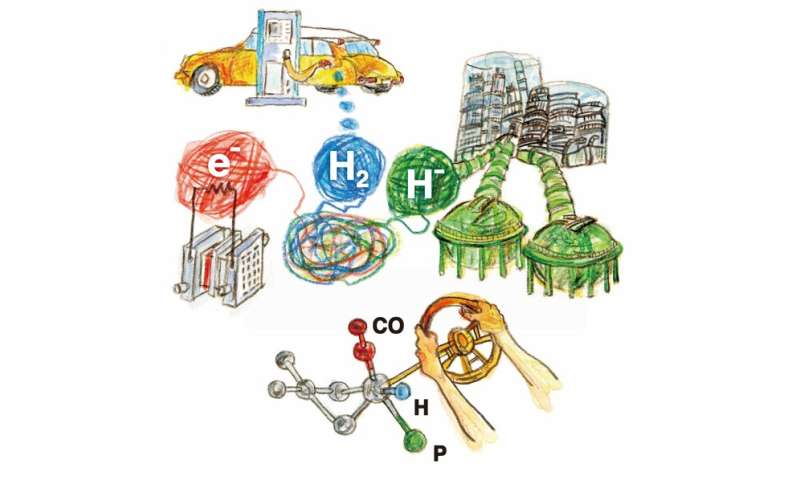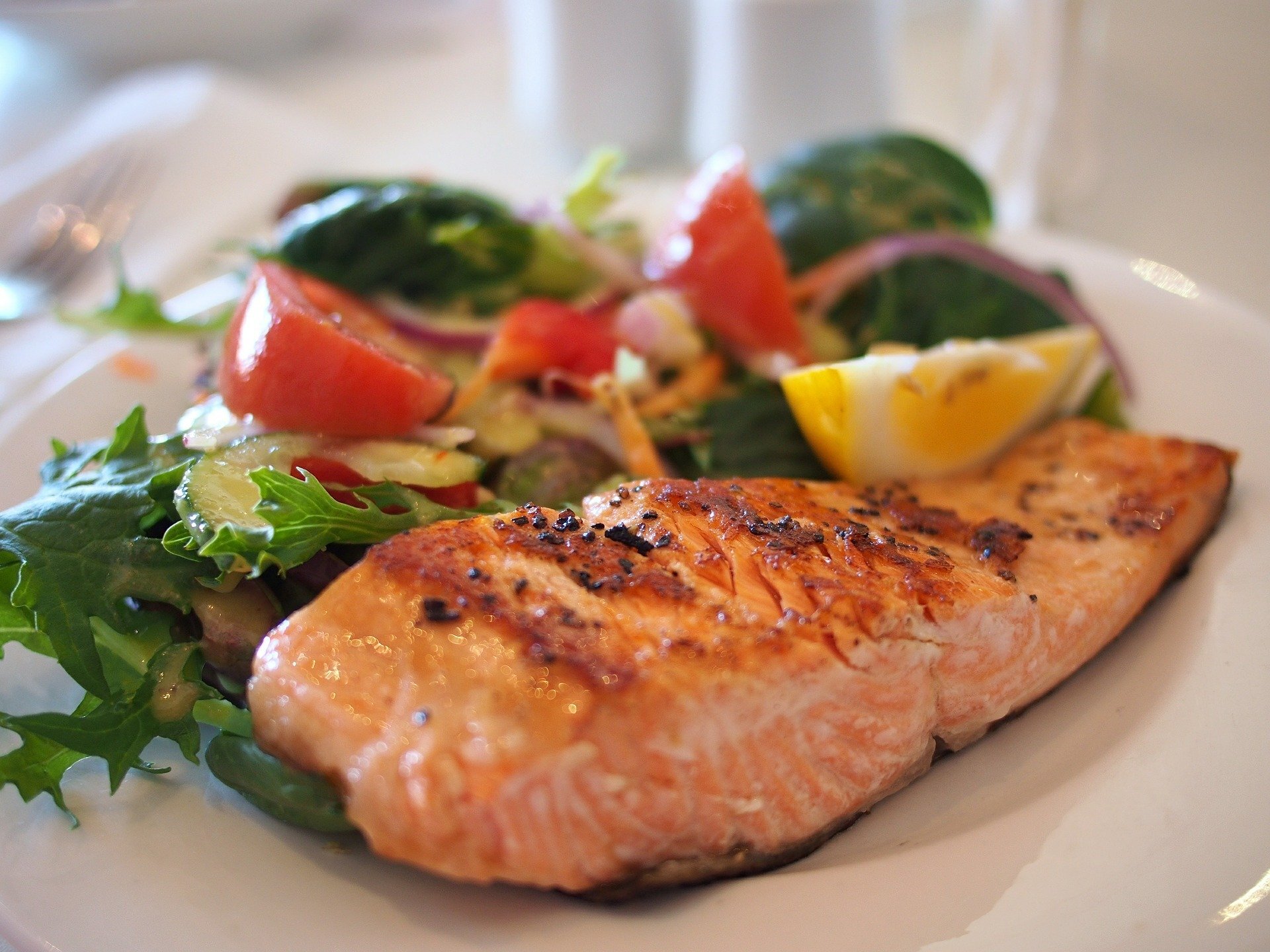#Molecular twist makes one catalyst useful for three hydrogen applications
“#Molecular twist makes one catalyst useful for three hydrogen applications”

Scientists from Kyushu University and Kumamoto University in Japan have developed a new catalyst capable of assisting three key reactions for using hydrogen in energy and industry. Inspired by three types of enzymes in nature, this research can help elucidate unknown relationships among catalysts, paving the way for efficient use of hydrogen gas as a next-generation energy source in the future.
Producing only water when used in a fuel cell to generate electricity, hydrogen holds great promise as a clean energy source to meet environmental challenges faced around the globe. One key for establishing hydrogen as a next-generation energy source is the development of catalysts—chemicals that assist and accelerate reactions without being consumed in the process—that help use it efficiently.
Catalysts play a role not only in splitting hydrogen molecules to generate electricity in fuel cells but also in putting hydrogen atoms together to form the fuel. Hydrogen also has many applications in the chemical industry, often being attached to molecules through the process of hydrogenation to modify their properties.
Nature has already developed its own set of biological catalysts, known as enzymes, capable of these same fundamental reactions. However, each of these three reactions requires a different type of enzyme, and these hydrogenase enzymes can be grouped by the metals they contain: an atom each of nickel and iron, two atoms of iron, or a single atom of iron.
Taking inspiration from nature, research teams led by Seiji Ogo from Kyushu University and Shinya Hayami from Kumamoto University now report in the journal Science Advances that a single catalyst can perform all three roles.
“Looking closely at key structures of the three types of hydrogenase enzymes in nature, we were able to design a molecule that could mimic all of these structures depending on where hydrogen attaches to it,” said Ogo, professor of Kyushu University’s Department of Chemistry and Biochemistry.
The catalyst the scientists developed contains nickel and iron as the key metals. Depending on reaction conditions, hydrogen atoms will connect to the molecule in a slightly different way, leading to a twisting of the molecule that puts it in a configuration best suited for one of the three types of reactions.
While the enzymes in nature rely on different sets of metals to accomplish these reactions, the newly developed catalyst takes advantage of the molecular twist being enough to switch between structures similar to those of the three types of enzymes, thereby obtaining similar functions without changing the metals.
“In a way, we’ve created a molecule with a steering wheel on it,” explains Ogo. “By turning the steering wheel and twisting parts of the molecule, we can turn it into three different types of catalysts—one for fuel cells, one for hydrogen production, and another for hydrogenation.”
Ogo adds, “This has allowed us to unravel three functions that were previously intertwined.”
While the molecule may not be suitable for practical applications at present, it points toward the possibility of developing a single catalyst with multiple uses. More importantly, the better understanding of the catalytic processes afforded by this molecule can give crucial insight into natural enzymes and the development of future catalysts for realizing a hydrogen-powered society.
More information:
“[NiFe], [FeFe], and [Fe] hydrogenase models from isomers” Science Advances (2020). DOI: 10.1126/sciadv.aaz8181
Provided by
Kyushu University
Molecular twist makes one catalyst useful for three hydrogen applications (2020, June 10)
retrieved 10 June 2020
from https://phys.org/news/2020-06-molecular-catalyst-hydrogen-applications.html
This document is subject to copyright. Apart from any fair dealing for the purpose of private study or research, no
part may be reproduced without the written permission. The content is provided for information purposes only.
If you want to read more Like this articles, you can visit our Science category.
if you want to watch Movies or Tv Shows go to Dizi.BuradaBiliyorum.Com for forums sites go to Forum.BuradaBiliyorum.Com




